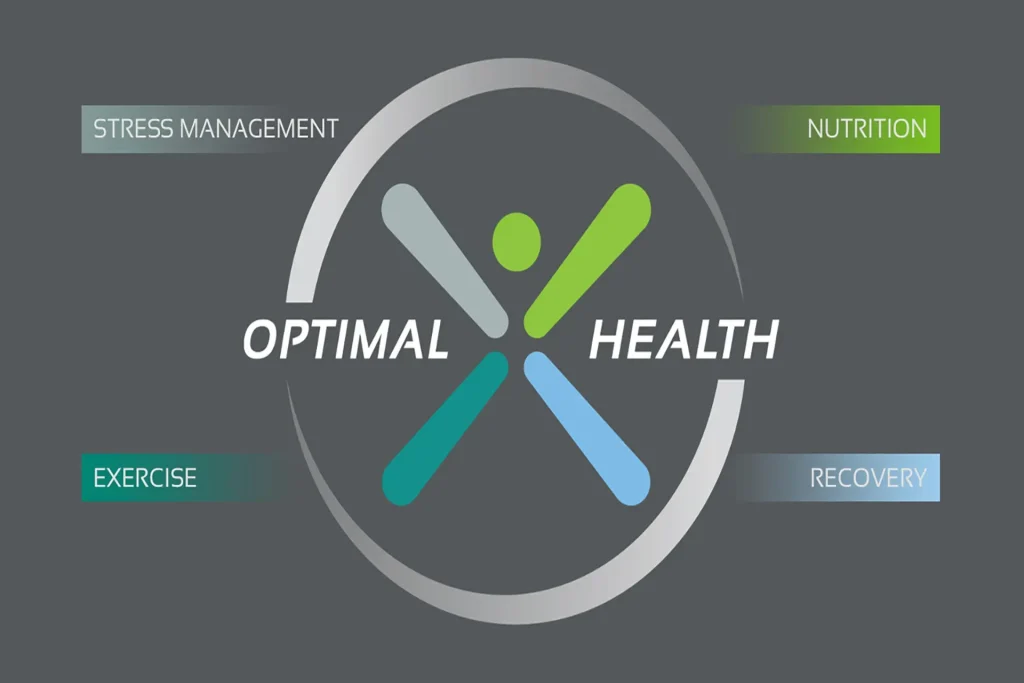In a significant announcement, the Department of Health and Human Services (HHS) has decided to remove the mercury preservative thimerosal from flu shots distributed across the United States. This decision comes despite the considerable lack of evidence suggesting that thimerosal poses any harm to individuals receiving vaccinations. HHS Secretary Robert F. Kennedy Jr. adopted this recommendation from the Advisory Committee on Immunization Practices (ACIP), aiming to enhance flu shot safety amidst ongoing flu vaccine controversy. Although only a small fraction of flu shots still contain thimerosal, this move eliminates what has historically been an important vaccine option for many Americans, leading to concerns about vaccination policies and public health. As the anti-vaccine movement celebrates this decision, it could have broader implications for vaccine uptake and public trust in flu shot safety, stirring further debate on the validity of mercury-based preservatives in vaccines.
The recent initiative to eliminate the mercury-based preservative from influenza vaccinations has sparked a new chapter in the ongoing discussion surrounding vaccine components and public health. Often referred to by its controversial name, thimerosal has been the focal point of vaccine hesitancy for years, despite scientific evidence supporting the safety of flu shots without its presence. This shift in vaccination policy, led by HHS Secretary Robert F. Kennedy Jr., highlights a growing concern among some segments of the population regarding the safety of certain vaccine ingredients. As thimerosal’s removal may impact the availability of multi-dose flu vaccines, it raises critical questions about the future of flu shot safety and the role of governmental recommendations in public vaccination strategies. Overall, this development contributes to the larger context of flu vaccine controversies, as society grapples with the balance between safety perceptions and established medical research.
Understanding Thimerosal: The Mercury Preservative in Flu Shots
Thimerosal is a mercury-based preservative that has been used in vaccines for decades to prevent the growth of harmful bacteria in multi-dose vials. Its use has been particularly common in flu shots, which may contain thimerosal to maintain vaccine integrity over multiple doses. However, the safety of thimerosal has been a topic of heated debate, with proponents of vaccination policy arguing that extensive studies have shown no evidence linking thimerosal to any harmful effects. In light of this research, the recent decision to remove thimerosal from flu shots has raised questions about the future of vaccine safety and the impact on public health.
Despite the evidence supporting the safety of thimerosal, its inclusion in vaccines has been a central point in the flu vaccine controversy, primarily driven by fears connecting thimerosal to developmental disorders such as autism. Proponents of the anti-vaccine movement have leveraged these fears, calling for the removal of thimerosal from all vaccines. The recent announcement from the Department of Health and Human Services (HHS) indicates a shift towards adhering to these calls, showing that public sentiment surrounding vaccine safety can influence vaccination policy significantly.
The Impact of Thimerosal Removal on Vaccination Rates
The removal of thimerosal from flu shots is expected to have significant implications for vaccination rates across the United States. As health officials fear, this decision may inadvertently contribute to a decrease in the number of individuals seeking flu vaccinations. Historically, maintaining a choice for consumers has been a vital component of public health policy. Without options for thimerosal-containing vaccines, individuals who harbor specific concerns about vaccine ingredients might choose to forgo vaccinations altogether. This trend is concerning, especially given the ongoing challenges in achieving herd immunity against influenza.
Moreover, the loss of thimerosal as a preservative option could also affect those who rely on multi-dose vials, which are often more cost-effective and readily available in some communities. Health experts warn that reducing access to these vaccines may lead to increased flu cases and hospitalizations, particularly among vulnerable populations such as children, the elderly, and those with compromised immune systems. While the intent behind thimerosal’s removal is to enhance public confidence in vaccine safety, its execution could paradoxically undermine vaccination efforts.
The Role of ACIP in Vaccination Policy Changes
The Advisory Committee on Immunization Practices (ACIP) plays a crucial role in shaping vaccination policies in the U.S., and its recent recommendation to remove thimerosal from flu shots exemplifies this power. This influential panel, which consists of health experts and community stakeholders, reviews data and provides guidance on vaccination practices aimed at protecting public health. The decision to endorse the removal of a long-utilized mercury preservative like thimerosal is indicative of a shift in how vaccination policies are influenced by public perception and activism surrounding flu shot safety.
With the appointment of new members to ACIP, including individuals known for their anti-vaccine views, the panel’s recommendations may reflect a broader societal concern rather than strict adherence to scientific evidence. This shift could signal a more cautious approach towards vaccine components, which relies heavily on public confidence rather than empirical research. Such changes may inadvertently perpetuate misinformation about vaccine ingredients, reinforcing the fears that have often derailed discussions about flu vaccine safety and efficacy.
Examining the Flu Vaccine Controversy and Public Sentiment
The flu vaccine controversy is a prism through which multiple concerns converge, from safety issues regarding thimerosal to broader fears about vaccination efficacy. This ongoing debate reflects public sentiment influenced by social media, celebrity endorsements, and grassroots movements. These channels have amplified anti-vaccine narratives, leading to increased scrutiny of vaccine ingredients and policies. As HHS Secretary Robert F. Kennedy Jr. moves to align federal health policies with these concerns, the role of public opinion in shaping vaccination practices becomes increasingly significant.
The decision to eliminate thimerosal from flu shots reinforces long-standing anxieties about vaccines and their components, even against substantial scientific evidence disputing links to health risks. To navigate this contentious environment, health officials must work on educational campaigns that effectively communicate the safety of flu vaccines while also addressing the misinformation that fuels vaccine hesitancy. Balancing public health initiatives with ongoing concerns about ingredients like thimerosal will be key to preserving trust in vaccination efforts.
The Challenges of Mercury-Free Vaccination Options
With the removal of thimerosal from flu shots, vaccine manufacturers and health providers face the challenge of ensuring adequate supply without compromising accessibility. While CDC data indicates that a majority of the nation’s flu vaccines were already thimerosal-free, the elimination of the preservative from all products may raise logistical issues for multi-dose vials. The reliance on single-dose injections, which are often less economical, could hinder efforts to vaccinate larger populations effectively, particularly in underserved areas.
Transitioning to thimerosal-free options may also involve increased production costs, which could translate to higher prices for consumers and healthcare providers alike. These financial implications can impact vaccination rates negatively, especially among low-income populations who may rely on government-assisted vaccination programs. As health authorities strive to enhance safety by removing harmful ingredients, they must simultaneously navigate the economic realities that impact accessibility and public health outcomes.
The Future of Vaccine Safety Discussions
As thimerosal is officially removed from flu shots, discussions about vaccine safety are expected to evolve. Public health officials will need to continue addressing concerns over ingredients and their perceived ties to health issues, particularly amidst ongoing vaccine controversies amplified by public figures and media. Demonstrating transparency in vaccine safety data and fostering open dialogues with communities will be crucial to rebuilding confidence in immunizations, particularly with flu shots that have undergone such a significant policy change.
Moving forward, the future of vaccine safety discussions may benefit from incorporating diverse perspectives, including those who have raised concerns about vaccine ingredients. Engaging in comprehensive dialogues that present scientific evidence alongside personal experiences can promote a balanced narrative, potentially easing fears surrounding flu shot safety and ingredients like thimerosal. Through cooperative efforts, public health advocates can mitigate the influence of anti-vaccine sentiments while encouraging positive vaccination behaviors across communities.
The Importance of Education in Vaccine Decision-Making
Education plays a pivotal role in shaping vaccine decision-making processes for individuals and families. With the public’s increasing concern over vaccine ingredients like thimerosal, health education initiatives must aim to clarify misconceptions and provide accurate information on vaccine safety. Comprehensive educational programs that detail the evolution of vaccine safety standards, including studies related to thimerosal, can empower consumers to make informed health decisions regarding flu shots and other vaccines.
Additionally, addressing the psychological factors driving vaccine hesitancy is essential for fostering a positive vaccination culture. Workshops, community outreach, and public service campaigns should focus on creating open environments where questions can be asked and concerns addressed. Through respectful engagement and the promotion of evidence-based information, educational efforts can dismantle barriers to vaccination and ensure that safety discussions lead to informed choices rather than fear-driven refusals.
Public Health and the Anti-Vaccine Movement
The actions taken by Robert F. Kennedy Jr. regarding thimerosal’s removal can be perceived as a concession to the anti-vaccine movement, which has long campaigned against immunization practices. This victory for anti-vaccine advocates may embolden similar actions in other areas of public health, driving a wedge between scientific consensus and public policy. As health authorities navigate the complexities of vaccine safety, they must consider the broader implications of yielding to such movements, especially in an era where misinformation can quickly spread.
Conversely, the anti-vaccine movement’s influence highlights the need for robust tools and policies to counteract misinformation and promote the importance of vaccines in public health. Engaging healthcare providers, community leaders, and educators in the promotion of accurate information about vaccines can help dismantle unwarranted fears. Building a proactive public health narrative is crucial in combating anti-vaccine sentiments while reassuring the community about the proven safety of vaccines, even those previously containing thimerosal.
Global Perspectives on Vaccine Ingredient Safety
The global discourse surrounding vaccine ingredient safety has gained momentum, with many countries reevaluating their vaccination policies in light of public fears. The removal of thimerosal from flu shots in the U.S. aligns with trends observed in other nations, where various health authorities have taken steps to remove this mercury preservative from vaccines. This shift reflects a growing emphasis on consumer safety, but also illustrates the influence that public sentiment can have when it comes to vaccination policy in different cultural contexts.
International health organizations are tasked with balancing scientific research and public perception regarding vaccine safety, particularly when addressing fears about ingredients like thimerosal. Building trust in vaccine safety requires a global collaboration on educational resources, allowing nations to share successful strategies that mitigate vaccine-related fears. As the U.S. pivots towards thimerosal-free options, it remains essential for world health leaders to engage in discussions that emphasize both empirical evidence and community concerns, ensuring that public health stands at the forefront of vaccination policies.
Frequently Asked Questions
What is the significance of thimerosal removal from flu shots?
The removal of thimerosal, a mercury-based preservative, from flu shots marks a significant shift in vaccination policy. While thimerosal has been shown to pose no harm according to extensive research, the decision, led by HHS Secretary Robert F. Kennedy Jr., addresses public concerns and aligns with the demands of the anti-vaccine movement.
Why was thimerosal present in flu shots, and why is it being removed?
Thimerosal was used in multi-dose flu shots as a preservative to prevent bacterial contamination. Its removal, despite the lack of evidence linking it to health issues, reflects a growing sensitivity to vaccine safety concerns and aims to reassure constituents about flu shot safety.
How will the removal of thimerosal from flu shots affect vaccination rates?
Experts worry that removing thimerosal from flu shots may reduce vaccination rates, as it eliminates some options for patients. Ensuring vaccine accessibility is critical in maintaining public health, especially during flu seasons.
What does the flu vaccine controversy surrounding thimerosal reveal about public perceptions?
The flu vaccine controversy relating to thimerosal underscores the impact of public perception and fear regarding vaccine ingredients. Despite scientific consensus on its safety, thimerosal has been a target for anti-vaccine activists, influencing vaccination policy decisions.
How many flu vaccines still contained thimerosal before its removal?
Before the removal, approximately 4% to 5% of the U.S. flu vaccine supply contained thimerosal, primarily in multi-dose vials. This decision now limits options but aims to ensure broader public trust in vaccination.
What has research shown about the effects of thimerosal in vaccines?
Over 40 studies conducted over several decades have found no evidence linking thimerosal to developmental delays or other significant health issues. The scientific community largely agrees on the safety of thimerosal in vaccines.
Who recommended the removal of thimerosal from flu shots?
The removal of thimerosal from flu shots was recommended by the Advisory Committee on Immunization Practices (ACIP), a key government vaccine panel, under the leadership of HHS Secretary Robert F. Kennedy Jr.
What are the implications of the thimerosal removal for public health policy?
The decision to remove thimerosal reflects a shift in public health policy toward addressing vaccine safety concerns, although it may inadvertently reinforce lingering fears about vaccine ingredients rather than affirming their safety.
What alternatives are available for flu shots after thimerosal removal?
Following thimerosal removal, vaccine manufacturers confirmed their ability to provide thimerosal-free alternatives for flu shots to ensure that vaccination programs for all populations, including children, continue without interruption.
Has thimerosal been linked to autism or other developmental disorders?
Extensive research has found no credible evidence linking thimerosal to autism or any developmental disorders. Misconceptions about its safety have driven public fears, despite the scientific evidence supporting its use in vaccines.
| Key Points | Details |
|---|---|
| Removal of Thimerosal | The Department of Health and Human Services (HHS) will officially remove thimerosal, a mercury-based preservative, from flu shots in the U.S. |
| Official Statement | This decision is backed by HHS Secretary Robert F. Kennedy Jr., who followed a recommendation from the Advisory Committee on Immunization Practices (ACIP). |
| Impact on Vaccine Options | Though only 4-5% of the flu vaccine supply contained thimerosal, its removal limits options for individuals seeking the vaccine. |
| Concerns Raised | Health experts warn that eliminating thimerosal may decrease overall vaccination rates and perpetuate fears linking thimerosal to autism and other developmental issues. |
| Historical Context | Kennedy’s previous advocacy and the panel’s recent vote reflect ongoing debates around vaccines and thimerosal’s safety despite extensive studies showing no proven harm. |
| Future Recommendations | HHS is reviewing other recommendations from ACIP’s June meeting for further updates on vaccine safety and practices. |
Summary
Thimerosal removal from flu shots marks a significant shift in vaccine policy, reflecting a response to public health concerns despite the absence of evidence indicating harm. As thimerosal has been widely researched, the decision brings to light the ongoing discussions surrounding vaccine safety and efficacy. This move, championed by HHS Secretary Robert F. Kennedy Jr., aims to protect vulnerable populations, but raises questions about access and public confidence in vaccination efforts. Understanding the implications of thimerosal removal from flu shots is crucial for navigating the future of vaccine policy and public health initiatives.



